Python, Python, Python!!! It is becoming very popular nowadays. Many developers are using it and its demand is increasing because it is simple, versatile, and easy for the users. Programmers use it in many different fields, such as the health sector, education, and business.
If you want to do coding using the Python programming language, you need a better laptop. There are many laptops to choose from, so choosing the right one may take some time. You should think about how much performance you need on your laptop for Python development.
If you’re looking for advice on which laptop to buy for Python, it depends on what you want to use it for. Some people may need a powerful laptop with a lot of storage, while others may need a more basic laptop.
It’s important to remember that many developers use more than one programming language, so you may need a laptop that can handle different types of software.
Factors to Consider When Choosing a Python Laptop
Budget
You don’t need a luxury or ultra-premium laptop for Python programming. Even if you’re on a tight budget, you can code in Python on an affordable laptop. If your budget is a little higher, around $1000 or more, you can find laptops that come with Python and programming capabilities.
Before buying a laptop, consider increasing your budget a bit to get a better laptop. Laptops don’t change as often as phones or other gadgets, so you’ll have them for four or five years. Choose the specifications of the laptop based on your budget.
Processing power
The performance of your laptop depends on the type of processor and the amount of RAM. Before choosing a laptop, check which generation processor it has as the newer generation generally performs better.
For Python or other programming, a new generation Intel Core i5 or Ryzen 5 processor is recommended. A dedicated graphics card is not necessary, an integrated graphics card will do. However, it is recommended to have at least 8GB of RAM. For better performance over five years, consider 16GB of RAM with a dedicated graphics card.
Display
Before choosing a laptop for programming, consider its screen size. Python programming is often done by engineers or developers who need portability. A laptop with a 15-inch display is a good choice, as it balances portability with a screen large enough for programming. If you also want to use your laptop for gaming, a screen size of 16 inches or larger may be better.
When looking at a display, consider the resolution, type of display, and technology used. Higher resolution and new display technologies can improve your viewing experience and make programming more comfortable.
Operating system
Many developers prefer to use the Linux operating system because of its lightweight nature and high performance, especially for programming. Although Python can run on Windows and Mac operating systems, Linux is often considered the best choice for coding due to its flexibility and compatibility with many programming tools and languages.
Storage
To code effectively on a laptop, it is recommended to use a solid-state drive (SSD) as the primary storage. SSDs provide good performance and durability. However, if cost is a concern, a hard disk drive (HDD) may also be considered. HDDs are more affordable but are slower and can consume more power.
SSDs are preferred for programming as they produce faster output and are more reliable. Unlike HDDs, SSDs have no moving parts and are composed of a single circuit, making them less prone to mechanical failure. This can result in a longer lifespan of your laptop.
Keyboard and trackpad quality
A comfortable keyboard and a responsive trackpad are a must for programming. Since coding involves a lot of typing, choose a laptop with proper keyboard spacing, good key travel, and tactile feedback.
A backlit keyboard is also useful for working in low-light conditions. Additionally, the large, precise trackpad with gesture support can improve your workflow, especially if you’re using Linux or Mac.
Cooling and Thermal Management
Programming can sometimes involve running resource-intensive tasks, such as testing software, running virtual machines, or processing large datasets.
A laptop with a good cooling system will help maintain performance and prevent overheating. Thin laptops have limited cooling solutions, so if you plan on performing heavy tasks, consider a laptop with a well-ventilated chassis and efficient cooling fans.
Upgradability
Since program requirements can change over time, it’s a good idea to choose a laptop that allows for hardware upgrades. Choose a laptop with upgradeable RAM and storage. Some laptops allow you to increase the RAM to 32GB or add an additional SSD, which can help extend the life of the device.
Port Selection and Expandability
Programmers often need multiple ports to connect external displays, USB drives, and other peripherals. Look for a laptop with a variety of ports, including:
- USB-C / Thunderbolt enables fast data transfer and is future-proof.
- If you plan to use an external monitor, you’ll need HDMI/DisplayPort.
- Multiple USB-A ports can be used to connect peripherals such as a mouse, keyboard or external storage.
- SD card slot (optional if you are using a microcontroller or embedded system).
Battery Efficiency and Power Management
While battery life is mentioned, power efficiency is just as important. Laptops with good power management features, such as high-performance standby mode and adaptive brightness, can improve battery performance.
If you plan to work on the go, consider buying an Ultrabook with long battery life instead of a power-hungry gaming laptop.
The Best Laptops for Python Programming: Top Pick
| Image | Product | Feature | Price |
|---|---|---|---|
|
TOP Pick
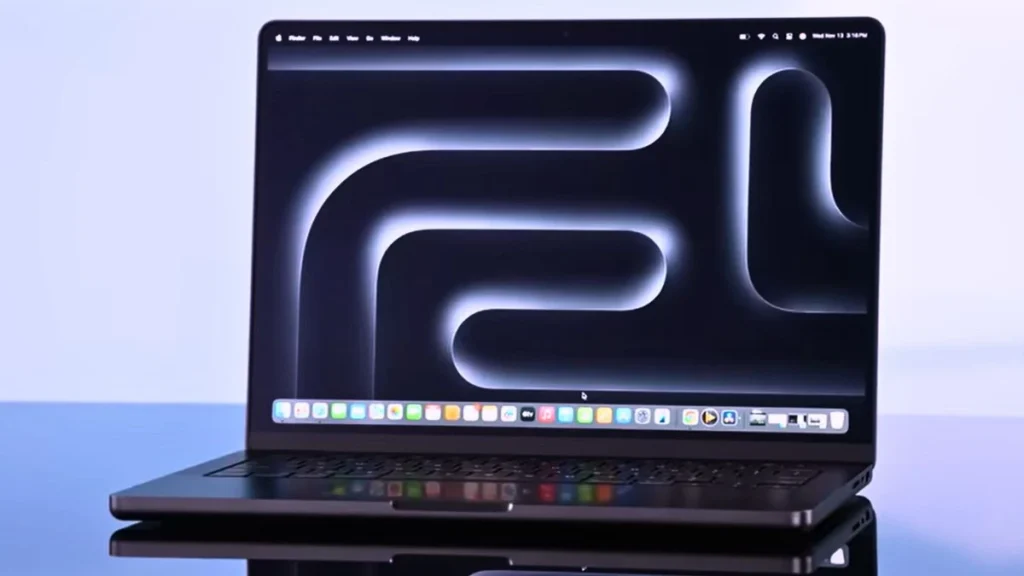
|
Apple MacBook Pro M4
|
|
Check Price |
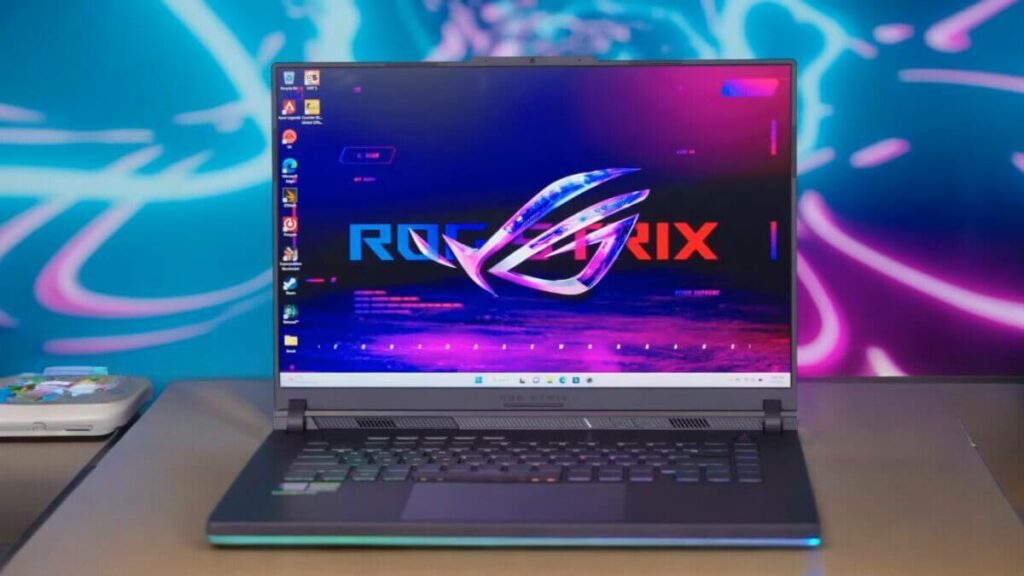
|
ASUS ROG Strix G16
|
|
Check Price |
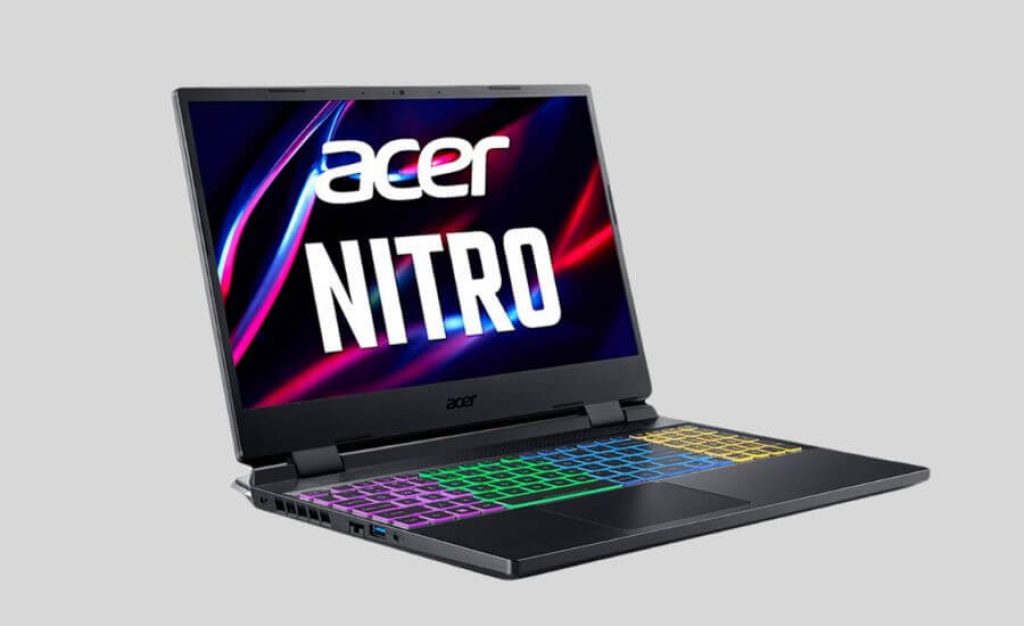
|
Acer Nitro 5
|
|
Check Price |
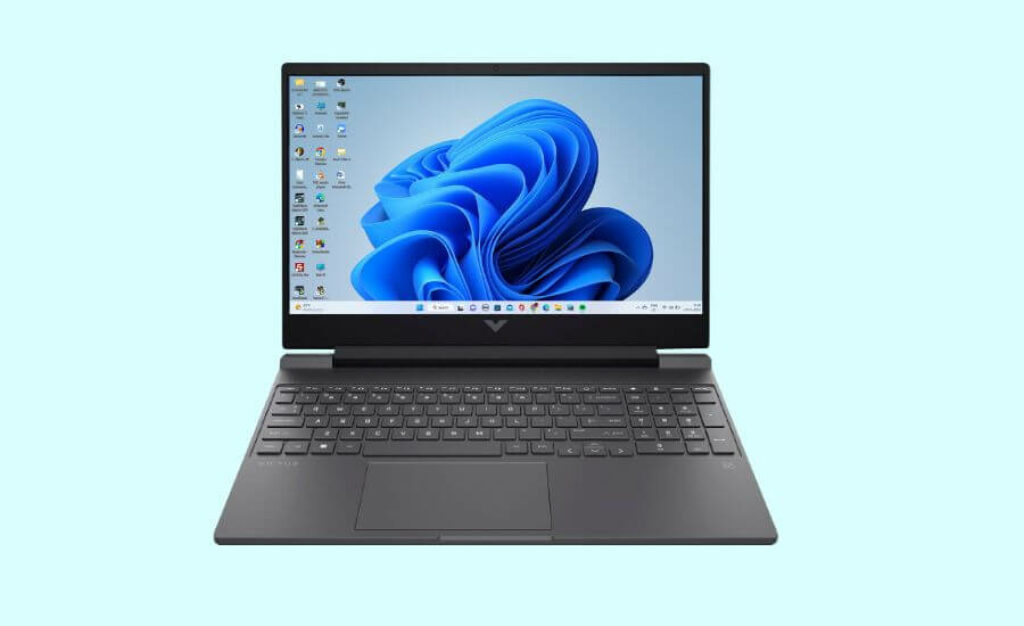
|
HP Victus 15
|
|
Check Price |

|
MSI Thin GF63
|
|
Check Price |
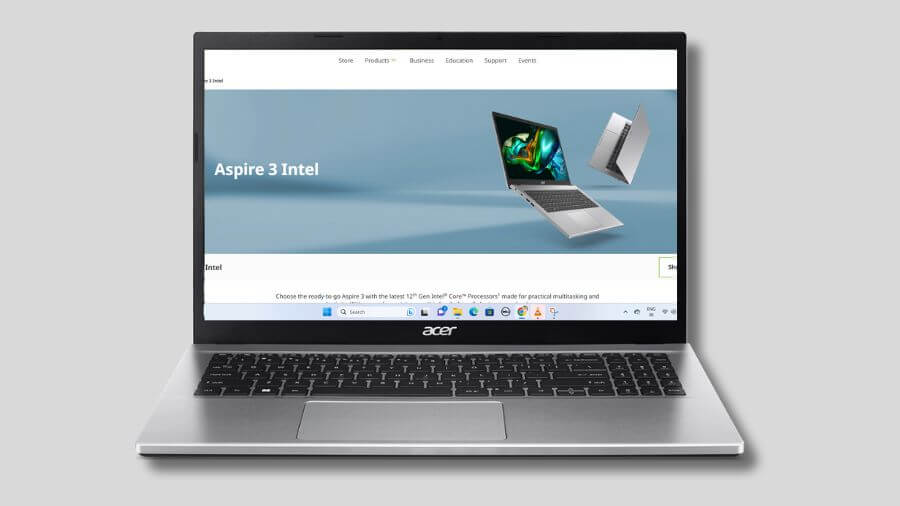
|
Acer Aspire 3
|
|
Check Price |
High-performance laptops (for demanding tasks):
1. Apple MacBook Pro M4

The Apple MacBook Pro M4 is a standout choice for Python programmers, powered by Apple’s M4 chip, which ensures the swift execution of coding tasks. With its 16-core Neural Engine, it excels at accelerating machine learning workloads, providing both speed and efficiency.
One of its key features is the 14.2-inch Liquid Retina XDR Display, boasting a screen resolution of 3024×1964. This vibrant display supports True Tone and P3 wide color gamut, delivers incredibly clear and vibrant visuals, enhancing the coding experience.
The integrated 10-core GPU significantly boosts performance for graphics-intensive tasks, making it ideal, making it ideal for programming projects that require graphic power.
The laptop’s FaceTime HD camera and a three-mic array ensure crystal-clear video chats and conference calls, while the 1080p resolution offers improved image quality.
In terms of performance, the MacBook Pro M4 features 16GB of fast memory and a 1 TB SSD, ensuring smooth multitasking and quick access to files.
Thanks to its 72.4-watt-hour lithium-polymer battery, this laptop offers up to 24 hours of video playback, ideal for extended coding sessions, even while travelin.
Weighing just 3.41 pounds (1.55kg), the MacBook Pro M4 is portable and convenient, It also features a sleek design and a comfortable keyboard, enhancing portability and usability.
Overall, with its exceptional performance, stunning display, and long battery life, the Apple MacBook Pro M4 is a top choice for Python programmers seeking a reliable and efficient coding companion.
Pros
✔ Exceptional M4 Chip Performance
✔ Stunning Liquid Retina XDR Display
✔ Long Battery Life
✔ Premium Build Quality
✔ MagSafe 3 for Secure Charging
Cons
✘ Expensive for Base Configuration
✘ Fewer Ports Compared to Some Competitors
Read our Apple MacBook Pro M4 Review
2. ASUS ROG Strix G16

| CPU (Processor) | 13th Gen Intel Core i7-13650HX Processor (2.6 to 4.9 GHz, 24M Cache, 14 cores) |
| GPU | NVIDIA GeForce RTX 4060, 6GB GDDR6 |
| RAM | 16GB DDR5 4800 MHz Memory |
| Storage | 512 GB PCIe 4.0 NVMe M.2 SSD |
| Screen | 16-inch, FHD+ 16:10 (1920×1200 pixels), anti-glare display, 100% sRGB, 165Hz |
| Weight | 5.51 lbs (2.5 Kg) |
| Battery | 6 Hours |
| Others | Wi-Fi 6E, Bluetooth 5.3, Windows 11 Home, Backlit Keyboard |
The ASUS ROG Strix G16 laptop is one of the best laptops for Python programming, combining power, reliability, and convenience. Powered by a strong 13th-generation Intel Core i7-13650HX processor and 16GB DDR5-4800 MHz Memory, it ensures smooth performance, handling multiple Python scripts and tasks effortlessly.
Its 16-inch, FHD+, anti-glare, 165Hz display with 100% sRGB color space offers clear visuals, providing ample space for coding, tasks such as text analysis, sentiment analysis, and language translation, and running Python programs with ease.
A key feature is its fast SSD storage with 512 GB PCIe 4.0 NVMe M.2 SSD, ensuring quick boot times and snappy application launches, essential for efficient Python development. The 4-zone RGB backlit keyboard and responsive touchpad enhance usability during coding sessions, offering comfort and precision.
Regarding connectivity, the ROG Strix G16 laptop offers a range of ports, including USB-C, HDMI, and USB-A, allowing easy connection to external devices and peripherals. Wi-Fi 6E support ensures fast and reliable wireless connectivity, which is essential for accessing online resources and collaborating with peers.
The NVIDIA GeForce RTX 4060 graphics with 6GB GDDR6 VRAM provide excellent performance for graphical tasks, which would benefit demanding applications. However, for Python programming, this should be more than enough.
Battery life is respectable, providing around 6 hours of mixed usage on a single charge, making it suitable for programming on the go. Overall, the ROG Strix G16 laptop offers an excellent balance of performance, features, and value. It is ideal for Python programming enthusiasts and professionals looking for a reliable and efficient laptop solution that costs around $1200.
| PROS |
|---|
| ✔ Powerful Processor |
| ✔ Smooth Graphics Performance |
| ✔ Excellent Cooling System |
| ✔ Affordable Price |
| ✔ Great Display with Fewer bezels |
| CONS |
|---|
| ✘ Heavy |
| ✘ No Thunderbolt 4 Port |
Read our ASUS ROG Strix G16 Gaming Laptop Review
Mid-range (Balance of performance and affordability)
1. Acer Nitro 5

Specifications
| CPU (Processor) | 12th Gen Intel Core i5-12500H (2.5 to 4.5 GHz, 12 core, 18MB cache, 16 threads) |
| GPU | NVIDIA GeForce RTX 3050 Ti (4GB dedicated GDDR6 VRAM) |
| RAM | 16GB DDR4 3200MHz Memory |
| Storage | 512GB PCIe Gen 4 SSD |
| Screen | 15.6-inch FHD IPS display;144Hz refresh rate and 3ms response time |
| Weight | 5.51 lbs (2.5 kg) |
| Battery Life | Up to 8 hours |
| Others | RGB Backlit Keyboard, Wi-Fi 6, Bluetooth 5.2, Windows 11 Home |
If you’re an engineering student or require a laptop for Python programming, consider this Acer Nitro 5, priced at just under $800.
The Acer Nitro 5 is a versatile laptop catering to gaming and programming needs. While it’s primarily known for its gaming capability, its specifications also make it suitable for Python programming enthusiasts.
Equipped with a 12th-generation Intel Core i5-12500H processor, the Nitro 5 ensures smooth gaming and boosts performance for programming tasks like compiling and debugging. Its NVIDIA GeForce RTX 3050 Ti graphics card with 4GB VRAM adds value and provides smooth rendering for programming projects.
The laptop’s 15.6-inch Full HD display with a 144Hz refresh rate enhances the gaming experience and provides a spacious workspace for coding tasks. It has NVIDIA GeForce RTX 3050 Ti (4GB GDDR6) graphics with dedicated RT Cores for ray tracing and Tensor Cores for AI, crucial for efficient machine learning tasks.
The Nitro 5 also boasts a striking red backlit keyboard, adding to its aesthetic appeal. It has all the necessary ports and connectivity options, including a Thunderbolt 4 USB Type-C port, USB charging support, quad exhaust ports, Ethernet and HDMI port, Wi-Fi 6, etc.
Overall, the Acer Nitro 5 offers a compelling combination of performance, features, and affordability, making it a solid choice for gaming enthusiasts and Python programming students on a budget. Its powerful processor, dedicated graphics card, and ample connectivity options make it a versatile laptop for various computing needs. Whether you’re gaming or programming, the Nitro 5 delivers reliable performance and value for money.
| PROS |
|---|
| ✔ Affordable Price |
| ✔ Latest and Powerful Processor |
| ✔ Dedicated GPU |
| ✔ Wireless Wi-Fi 6 Convenience |
| ✔ Provides very loud sound with DTS X Ultra |
| ✔ 144Hz Refresh rate Display |
| CONS |
|---|
| ✘ Little bit Heavy |
| ✘ Noisy Fan |
Read our Acer Nitro 5 review
2. HP Victus 15

Specifications
| CPU (Processor) | AMD Ryzen 5 7535HS (3.3 GHz to 4.55 GHz, 6 cores, 12 threads, 16 MB cache) |
| GPU | NVIDIA GeForce RTX 2050 (4GB GDDR6 VRAM) |
| RAM | 16 GB DDR5-4800 SDRAM |
| Storage | 512GB PCIe M.2 SSD |
| Screen | 15.6-inch FHD (1920 x 1080) 144Hz anti-glare IPS Micro-edge 250 nits display |
| Weight | 5.10 lbs (2.3 kg) |
| Battery | 3-cell, 52.5 Wh, Li-ion polymer |
| Others | Backlit Keyboard, Wi-Fi 6, Bluetooth 5.1, HD Webcam, Windows 11 Home OS |
The HP Victus 15 is an excellent choice for Python programming enthusiasts, offering a perfect blend of performance and affordability. Powered by an AMD Ryzen 5 7535HS processor and NVIDIA GeForce RTX 2050 graphics with 4GB GDDR6 VRAM, this laptop ensures smooth execution of Python code, making compiling and debugging tasks a breeze.
The vibrant 15.6-inch, Full HD, 144Hz, anti-glare, IPS display provides ample screen space for coding activities, delivering crisp visuals and wide viewing angles for enhanced clarity.
With Wi-Fi 6 connectivity, the Victus 15 enables seamless access to online resources, facilitating collaborative coding and virtual meetings. Its sturdy build quality and ergonomic design ensure comfort and durability during extended coding sessions. The backlit keyboard enhances visibility in low-light conditions, while the spacious touchpad offers smooth navigation.
While the laptop excels in performance and usability, its affordability makes it an attractive option for budget-conscious programmers. Priced at about $600, it offers a compelling combination of features and value, making it an ideal companion for Python programming tasks.
While having an NVIDIA GeForce RTX 3050 graphics card would have been preferable, consider investing more in the Acer Nitro 5 if you prioritize graphics performance. Nevertheless, the Victus 15 delivers impressive performance for its price range.
Overall, with its robust performance, reliable connectivity, and affordable price tag, the HP Victus 15 stands out as a top choice for Python programming enthusiasts on a budget.
| PROS |
|---|
| ✔ Powerful Processor |
| ✔ 144Hz FHD Display |
| ✔ Affordable |
| ✔ Reliable Wi-Fi Connectivity |
| ✔ Enough RAM and Storage |
| CONS |
|---|
| ✘ No Fingerprint Reader |
Read our HP Victus 15 Review
Budget-friendly options (suitable for beginners)
1. MSI Thin GF63

Specifications
| Processor | 12th Gen Intel Core i5-12450H (up to 4.4 GHz, 12MB Cache, 8-Cores, 12-Threads) |
| Graphics | NVIDIA GeForce RTX 2050 |
| RAM | 8GB DDR4 3200MHz Memory |
| Storage | 512GB NVMe SSD |
| Screen | 15.6-inch FHD (1920 x 1080) IPS LED-backlit 144Hz Display |
| Weight | 4.10 lbs (1.86 kg) |
| Battery Life | 3-Cell, 52 Whr, lithium-polymer |
| Others | Backlit Keyboard, Wi-Fi 6, Bluetooth 5.1, and Windows 11 Home OS |
Are you looking for an affordable laptop for gaming and programming tasks? Look no further than the MSI Thin GF63. MSI gaming laptops promise a potent combination of performance and value. As we know, a gaming laptop gives an excellent performance, so a good gaming laptop will also provide a lot of value for Python programming.
Packed with a 12th-generation Intel Core i5-12450H processor and a 144Hz display, the GF63 ensures a seamless gaming experience without lags. Its 15.6-inch thin bezel screen offers ample space for immersive gameplay, with precise reaction times tailored for fast-paced gaming and compilation in your programming tasks.
Powered by an NVIDIA GeForce RTX 2050 graphics card, this laptop enhances gaming graphics and accelerates programming tasks thanks to its parallel processing capabilities. It even supports advanced graphical effects like ray tracing, elevating your gaming experience.
With Wi-Fi 6 connectivity, the GF63 delivers lightning-fast gaming, high-quality streaming, and seamless communication. Its Color Boost 5 technology, featuring two fans and six heat pipes, effectively dissipates heat, ensuring optimal performance during intense programming sessions.
Weighing lightly and boasting a portable design, the GF63 is perfect for on-the-go gaming and programming. Additionally, it features a backlit keyboard for enhanced visibility while working at night.
Meanwhile, the GF63 laptop needs a brighter screen and a longer battery life. This laptop offers excellent value for its price at around $700. However, if you prefer AMD processors and prioritize battery performance, consider the HP Victus 15, available for about $600.
| PROS |
|---|
| ✔ DLSS support with the potent RTX 4050 GPU |
| ✔ Handles most games smoothly |
| ✔ Lightweight for its size |
| ✔ Easily upgradeable for future gaming needs |
| CONS |
|---|
| ✘ Screen is not very bright. |
| ✘ Gets hot when playing games. |
| ✘ The screen is not very bright. |
Read our MSI Thin GF63 review
Acer Aspire 3

Specifications
| CPU (Processor) | AMD Ryzen 5 7520U Quad-Core Mobile Processor(Up to 4.3 GHz) |
| GPU | Integrated AMD Radeon Graphics |
| RAM | 8GB LPDDR5 |
| Storage | 512GB NVMe SSD |
| Screen | 14-inch FHD (1920 x 1080); 60Hz; LCD, IPS Display |
| Weight | 3.09 lbs (1.4 Kg) |
| Battery Life | Up to 10 hours |
| Others | Wi-Fi 6, Bluetooth 5, and Windows 11 Home |
The Acer Aspire 3 is a top choice for budget-friendly laptops, where you can get it under $400, perfect for Python programming. Powered by an AMD Ryzen 5 7520U quad-core processor, it ensures reliable performance for coding tasks, compiling, and executing Python scripts efficiently.
With a 14-inch FHD IPS display, the Aspire 3 provides ample screen space for coding, offering decent clarity and visibility. Equipped with integrated Radeon graphics, it ensures smooth multitasking, essential for handling complex programming projects. Despite not having dedicated GPUs, it still offers decent performance for graphical tasks and light gaming.
Affordability is a key highlight of the Acer Aspire 3, making it an ideal option for budget-conscious programmers and students. With a variety of ports including USB, HDMI, and Ethernet, connectivity is seamless, facilitating easy connection to external devices and peripherals. The laptop also features Wi-Fi connectivity for fast and reliable wireless access to online resources and collaboration.
On the other hand, the Acer Aspire is a budget-friendly trading laptop, featuring 8GB LPDDR5 RAM, and a 512GB NVMe SSD. With a 14-inch Full HD screen and a comfortable keyboard with a backlit option, it offers convenience for data visualization tasks using libraries like Matplotlib.
While its battery life lasts up to 10 hours on average, heavy usage like gaming may reduce it to 5-6 hours. Connectivity is robust with WiFi 6 and Bluetooth 5.2, ensuring smooth wireless connections.
Overall, the Acer Aspire 3 is an excellent choice for Python programming and basic trading tasks, offering reliable performance and affordability in a sleek package. Whether you’re a student, hobbyist, or professional, these laptops provide great value for those on a budget.
| PROS |
|---|
| ✔ Cheap Price |
| ✔ Powerful Processor |
| ✔ Great Upgradability |
| ✔ Responsive Keyboard and Touchpad |
| ✔ Enough RAM and Storage |
| CONS |
|---|
| ✘ Lower-quality built-in speakers |
| ✘ No Backlit Keyboard |
Read our Acer Aspire 3 Review
How to Choose a Laptop for Python Programming
To select the best laptop for Python programming, it is important to understand the required specifications.
It is essential to know what performance is required for specific programming tasks and which components can provide that performance. You can research this information, but following the recommendations and knowing your expectations will make it easier to choose the right laptop.
Look for a laptop with excellent performance, maximum RAM, and ample storage. For Python programming, a standard graphics card should suffice. Consider other factors like battery life, portability, quality of the operating system, build quality, available RAM and storage slots, and the possibility of upgrades.
It may not be possible to get all these features in a single laptop, but prioritizing the most important features will help you make the right choice.
FAQs
Yes, if your budget is low then you can use a cheap laptop for Python programming but it will not give that much better performance. You should keep the priority that the laptop should have enough RAM, storage, graphics card, and good processing power.
Python Developers often prefer Linux and macOS due to their Strong terminal access, Native Python tools, and open-source nature. The best operating system for Python depends on your personal preferences and comfort level. If you are familiar with Windows, it is perfectly fine to use it for Python development. However, if you’re considering switching or are brand new to programming, Linux and macOS may provide a more streamlined experience.
Python programming is not as memory-intensive as deep learning or MATLAB programming. So, if your laptop has 8 GB of RAM, preferably from the new generation, whose frequency is more than 3200 MHz, you will be able to handle Python programming tasks comfortably. However, it would be even better to choose a laptop with 16GB or more RAM to meet your development needs in the future.
Final Words
All of our selections are made with careful consideration of whether the programming can run and how fast. To ensure we provide accurate and up-to-date information, we have thoroughly reviewed online sources and collected feedback. If you find any of the above-mentioned laptops attractive, you can be assured that it will serve you well for learning Python programming.
However, if you are still unsure about which laptop to buy, or if you have specific budget constraints, please feel free to leave a comment. We will provide personalized recommendations based on your needs and budget. With our expertise, you can easily find the right laptop for your Python programming journey.


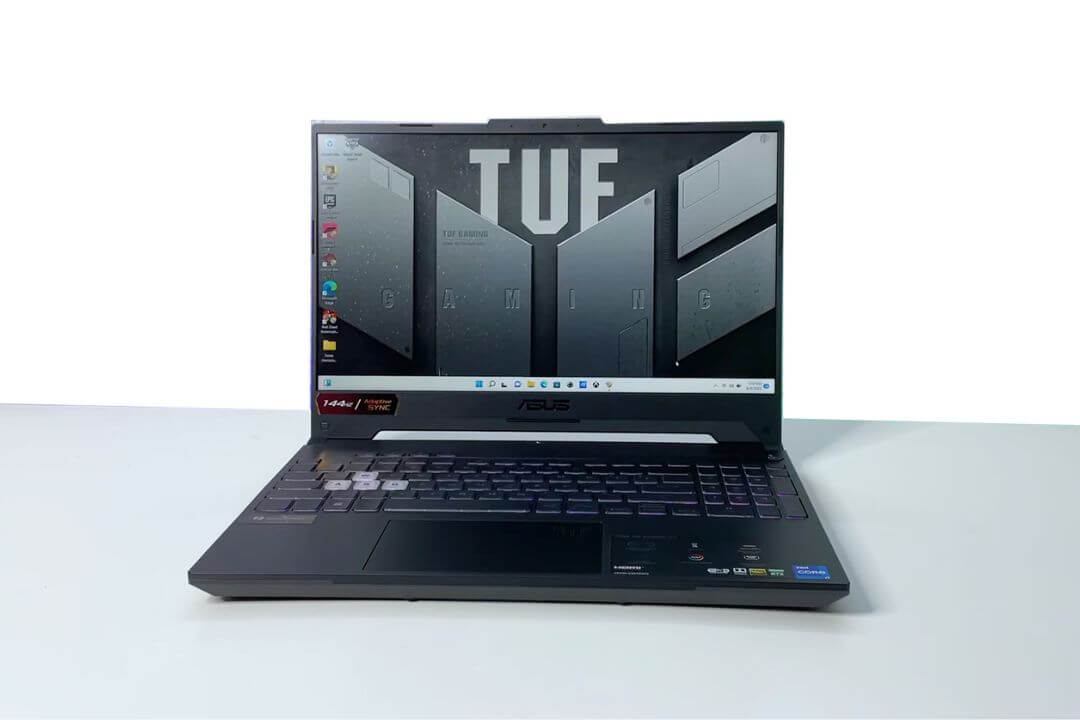

![The 11 Best Laptops for Deep Learning, ML, and AI [2025] Omen-17-Gaming-Laptop](https://pcvenus.com/wp-content/uploads/2022/05/Omen-17-Gaming-Laptop-edited.webp)